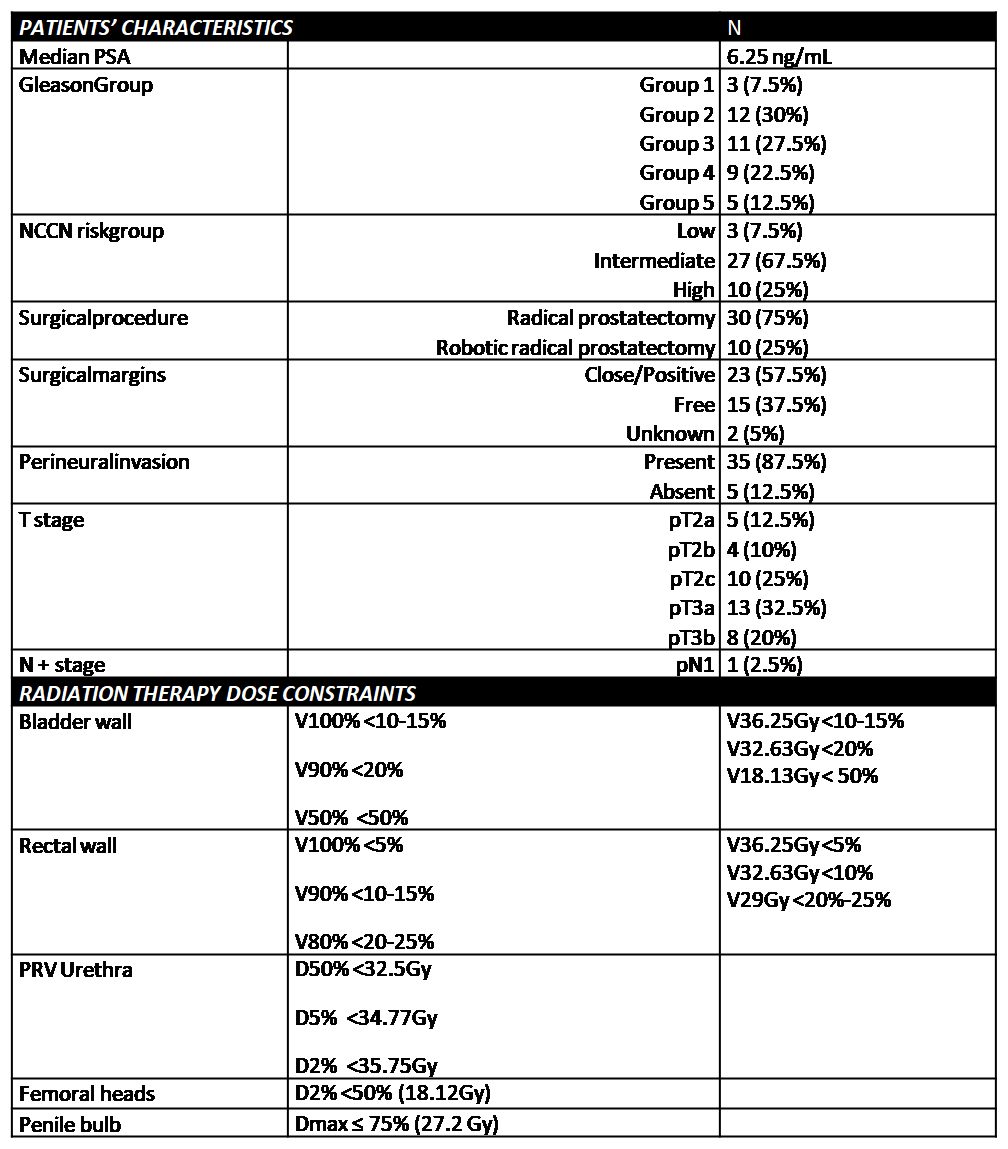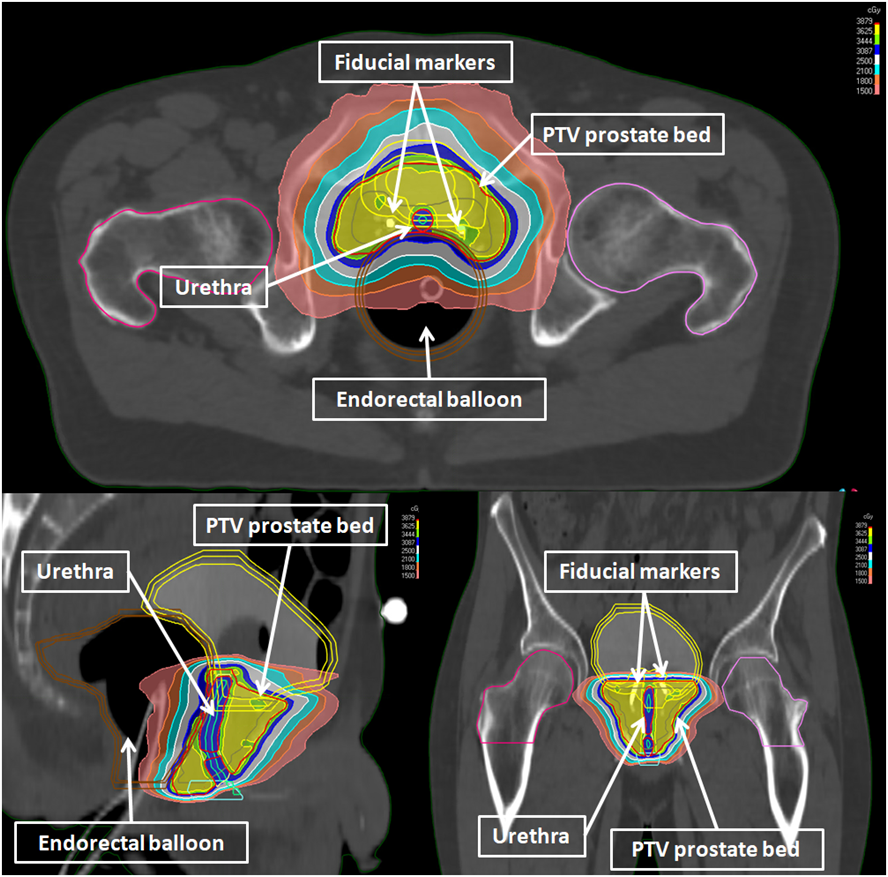Post-prostatectomy ultra-hypofractionated SBRT: preliminary results of a phase II trial
PO-1395
Abstract
Post-prostatectomy ultra-hypofractionated SBRT: preliminary results of a phase II trial
Authors: Angel Montero1, Ovidio Hernando1, Jeannette Valero1, Xin Chen-Zhao1, Jaime Marti2, Alejandro Prado2, Emilio Sanchez1, Mercedes Lopez1, Raquel Ciervide1, Mariola Garcia-Aranda1, Beatriz Alvarez1, Rosa Alonso1, Paz Garcia2, Monica Nuñez1, Jacobo Palma1, Marta Izquierdo1, Karla Rossi1, Carmen Cañadillas1, Pedro Fernandez-Leton2, Carmen Rubio1
1HM Hospitales, Radiation Oncology, Madrid, Spain; 2HM Hospitales, Medical Physics, Madrid, Spain
Show Affiliations
Hide Affiliations
Purpose or Objective
To evaluate feasibility and
tolerance of ultra-hypofractionated urethra-sparing SBRT in a cohort of
prostate cancer patients after radical prostatectomy
Material and Methods
From April 2019 to February 2021, 40p
with a median age of 68-yo (55-80) were include in this prospective phase II
trial. Patients’ characteristics before enrollment are detailed in Table 1.
Adjuvant radiotherapy (ART) was
considered in 10p (25%) andsalvage radiotherapy (SRT) in 30p (75%); median time
from surgery to SBRT: 20 months (2-211) (4.5 months (2-8) to ART vs. 31.5 months (7-211) to SRT).
All patients underwent VMAT up to a total dose of
36.25Gy in 5 fractions of 7.25Gy on every-other-day to the surgical bed (RTOG
consensus guidelines, Fig.1). Our urethra-sparing protocol reduced prescribed dose per fraction to the
urethra and the surrounding transitional zone from 7.25 Gy to 6.5 Gy; 10p (25%)
underwent elective nodal pelvic irradiation up to a total dose of 25 Gy in 5
fractions and 3p (7.5%) with macroscopical pelvic nodal disease received
simultaneous integrated boost up to 40 Gy in 5 fractions. Twenty-eight patients
(70%) were treated in a Novalis Linac with daily ExacTrac systemIGRT based
upon prostate bed gold-fiducial markers whereas 12p (30%) were treated in a
Versa-HD Linac with Clarity-4D Monitoring IGRT
system. In every fraction, daily immobilization with
an endorectal balloon filled-up with 80cc air to minimize rectal movements was
used. Dose constraints used are detailed in table 1. Patients were pre-medicated
with alpha-1 receptor antagonist before, during and up to one month after
completing SBRT. Eight patients (20%) received
androgenic deprivation therapy (ADT).


Results
With a median follow-up of 8 months (2-20) all patients are alive; 1p
(2.5%) developed biochemical progression; no distant relapses were observed.
Acute toxicity: genitourinary G1 10p (25%) and
G2 4p (10%); gastrointestinal G1 10p (25%). Late toxicity (in 28p with
follow-up >90 days) was G1 genitourinary and gastrointestinal in 1p each (2.5%).
Conclusion
Ultra-hypofractionated
adjuvant/salvage SBRTs eems to be a feasible and safe option after radical
prostatectomy. Longer follow-up is necessary to confirm observed results.